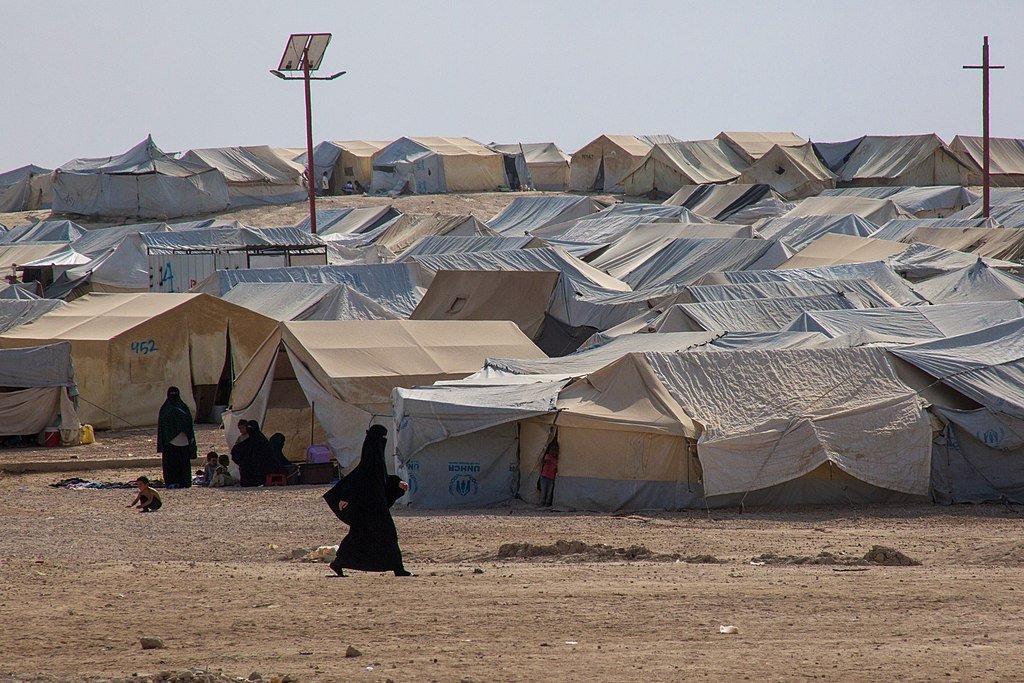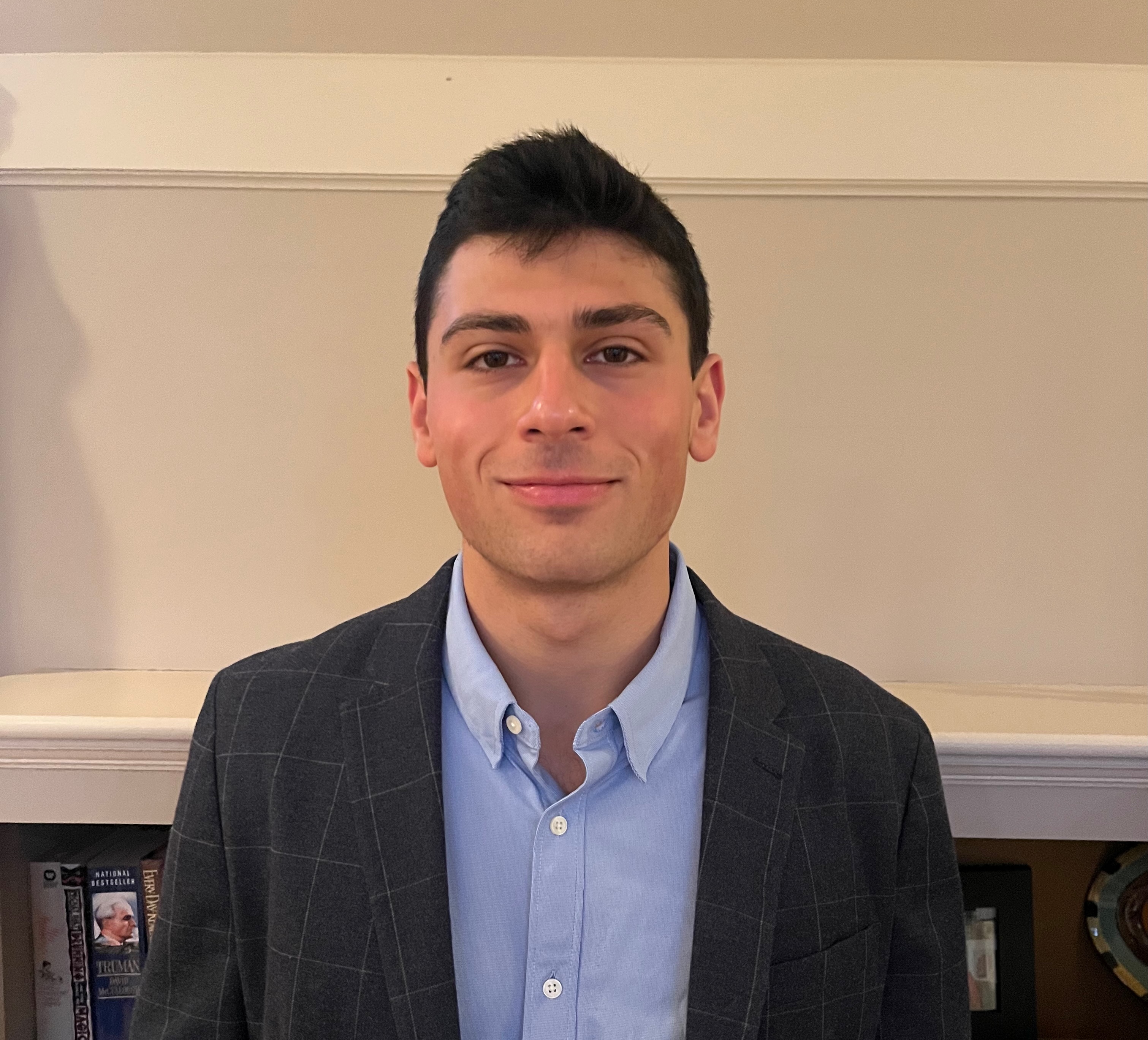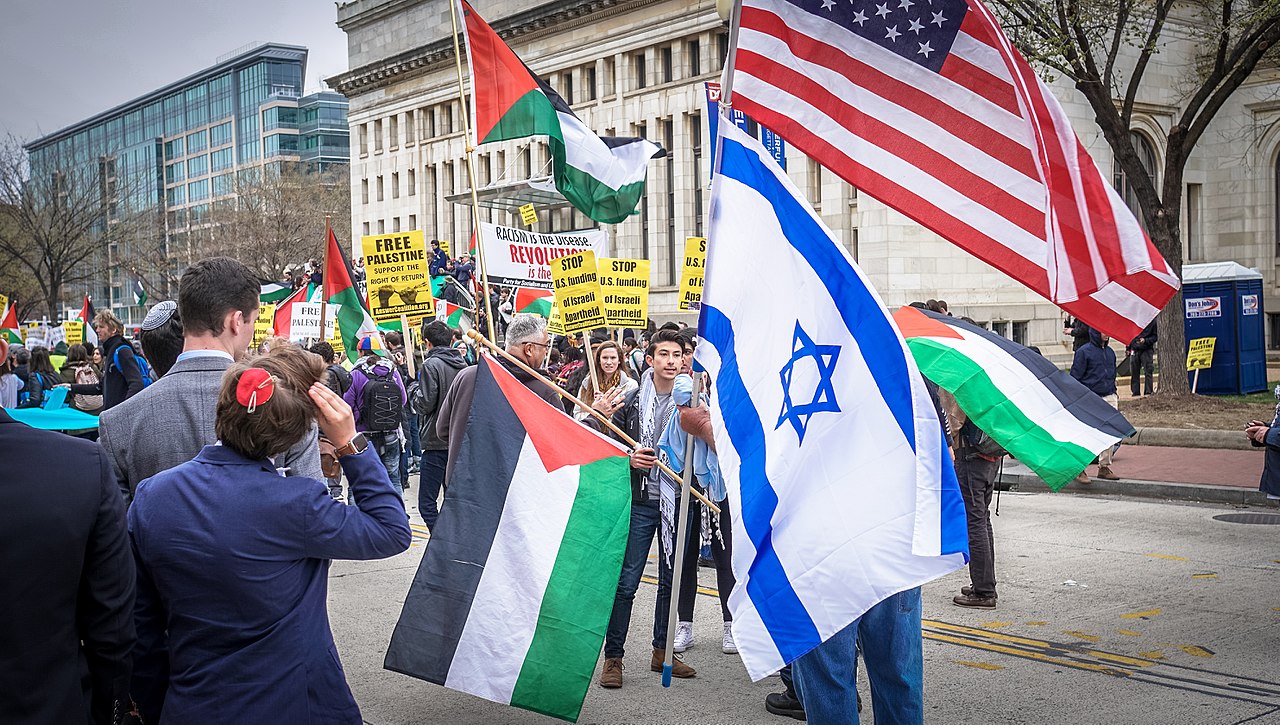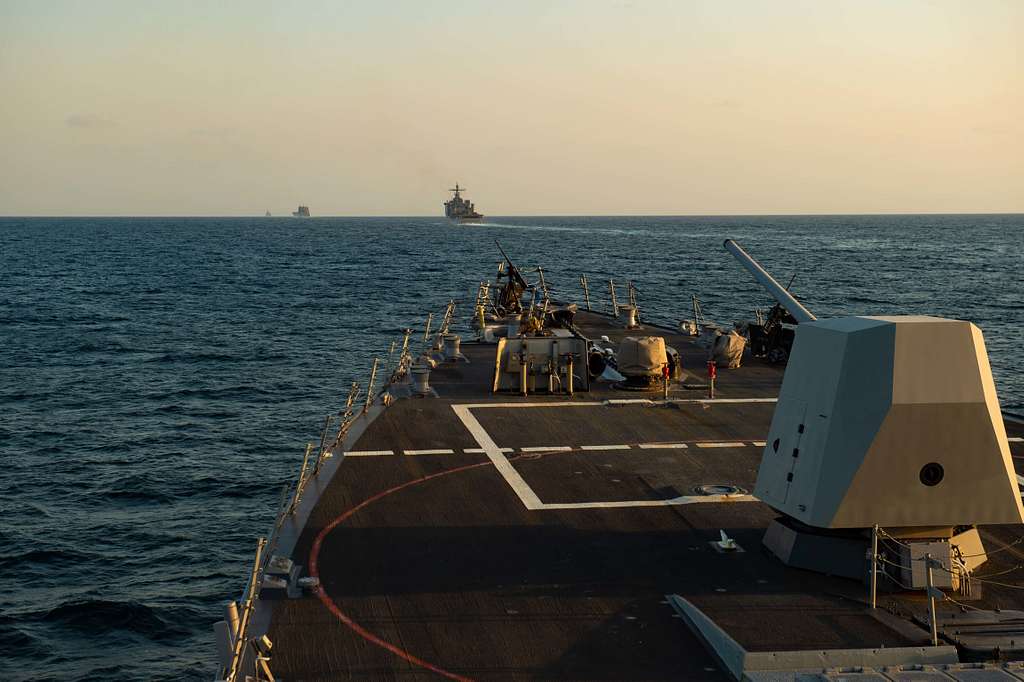Unpacking the UN Report on Detention Facilities in Northeastern Syria
What’s in the UN special rapporteur’s report following her technical visit to northeastern Syria?

Published by The Lawfare Institute
in Cooperation With

There’s a new special rapporteur on human rights and counterterrorism in town. Today, Ben Saul from the University of Sydney Law School takes over from University of Minnesota Law School Professor Fionnuala Ní Aoláin. The outgoing special rapporteur had an active tenure. Over the course of two consecutive three-year terms, Ní Aoláin examined human rights in the context of the death penalty for foreign fighters, emergency powers employed during the coronavirus pandemic, and terrorism financing. She also completed at least seven “country visits.”
Though Saul takes over today, Ní Aoláin’s work is still worth dwelling on—especially one notable report released this summer. In July, she conducted a six-day “technical visit” (as opposed to the more comprehensive “country visits”) to detention facilities in northeastern Syria holding individuals purportedly associated with the Islamic State. When the Syrian Democratic Forces (SDF) defeated the last stronghold of Islamic State fighters in March 2019, SDF forces gathered and detained tens of thousands of men, women, and children—some from Syria and some from abroad—whom they believed had ties to the terrorist organization. These people joined several thousand individuals who had already been detained by the SDF for their suspected links to the Islamic State. Of the approximately 60,000 individuals currently in the detention facilities in northeastern Syria, about 50,000 of them are from Iraq and Syria. The remaining individuals are from approximately 57 different countries. The detainees are spread across more than 15 ill-equipped camps, prisons, and rehabilitation centers with life-threatening conditions. More than half of the detainees are children.
Many people held in these facilities are not themselves linked to the Islamic State but were detained because of their family members’ alleged links to the terrorist organization. Some were hauled in solely because they lived in regions that had been controlled by the Islamic State when it fell. The SDF has tried many detained Syrians, and although it said in June that it would begin trying thousands of additional suspected foreign Islamic State fighters detained in the facilities, it’s unclear if any progress has been made or if the SDF has the authority to conduct these trials.
SDF leadership has said repeatedly that it has neither the desire nor the resources to securely maintain the detention facilities, but repatriation efforts have lagged. The SDF releases Syrian nationals when it determines they no longer threaten the country’s security, but SDF authorities cannot release foreigners until their home countries agree to take them in. And reaching that agreement is far from straightforward: States must weigh security, legal, and social reintegration concerns, in addition to the geopolitical consequences of recognizing and negotiating with non-state actors in Syria.
It is difficult to assess just how many individuals have been released from the detention facilities, as authoritative data is scarce and focuses on different populations. The U.S. State Department found that authorities released at least 8,548 Syrians from the Al Hol detention camp—where more than three-fourths of the detainees across all of the facilities are held—between mid-2019 and August 2021. The governing body in the region said that authorities released approximately 4,000 Iraqis from the detention facilities between 2019 and December 2022. And a nonprofit organization found that at least 36 other countries repatriated approximately 2,871 individuals from the detention facilities between 2019 and the summer of 2023.
The UN Report
Following her technical visit to northeastern Syria, Ní Aoláin authored an end-of-mission statement detailing her findings. She begins the report by describing the focus of her visit: “the complex and multi-layered issues and practices of detention and repatriation in Northeast Syria.” Her visit to the detention facilities was the first by “an independent human rights expert.” This was not the first such distinction for Ní Aoláin—her technical visit to Syria followed her technical visit last winter to Guantanamo Bay, which also marked the first visit by an independent human rights expert to that facility.
Ní Aoláin first met with government officials in Damascus before she moved on to the detention facilities. There, she visited two detention camps, Al Hol and Al Roj; two prisons, Alaya and Gweiran Sina’a (Panorama); and two detention centers for adolescent and juvenile boys, Houri and Orkesh. Ní Aoláin was not granted permission to visit the Al Hol camp annex—which holds foreigners—or to speak with the detainees held at the Panorama prison.
The detention facilities, as reported by the special rapporteur, lack basic human provisions and protections. What most concerned Ní Aoláin during her visit was the “indefinite” and “arbitrary” detention status of children. Although the SDF claimed to be holding these children because they threaten Syria’s security and were formerly connected to the Islamic State, there have been no individual legal decisions made in a large majority of their cases.
Al Hol and Al Roj
The Al Hol camp, the largest facility by a significant margin, contains about 49,100 people—approximately 3,000 men, 15,000 women, and 31,000 children. Individuals can neither enter nor leave the camp without authorities’ permission. Everyone Ní Aoláin spoke to about the camp during her visit to Syria—including the detaining authorities—agreed that the conditions at the camp are “exceptional, unsustainable, and increasingly establishing with permanence.” The camp’s occupants live in unstable structures that operate like tents. There is no sustainable water supply, which requires detention authorities to undertake the expensive process of bringing water tanks into the camp. Insecurity defines life there. Violent incidents—including murder, psychological intimidation, and sexual assault—occur often, and there are no investigative or judicial procedures to hold perpetrators accountable or prevent them from acting again. Security and administrative officials at the camp reportedly engage in intimidating behavior toward detainees.
Ní Aoláin was not permitted for purported security reasons to visit the annex of the Al Hol camp, which holds only third-country nationals (individuals from neither Syria nor Iraq). The report states that the detaining authorities employ more intrusive security measures in the Al Hol annex than in the other parts of the camp that hold Syrian and Iraqi individuals. Third-country nationals also have inferior access to health care. In particular, specialized women’s health care in the Al Hol annex is particularly deficient—as military officials’ security concerns related to transporting women outside of the camp purportedly outweigh women’s medical needs. When authorities capture women and children trying to escape from the Al Hol annex, the authorities place them in prisons, where these detainees are closed off from anyone outside of the prisons and held “in alleged inhumane conditions for months before returning them to the camp.”
The conditions at Al Roj are not as dire as they are at Al Hol, as the detainees there have more resources and freedom to move around within the camp. But many of the same problems exist at Al Roj: “[T]he conditions of life including housing, access to water, and limitations on food, education and health are harsh.”
The health care system at Al Roj, like at Al Hol, has several significant deficiencies. Many of the detainees do not speak Arabic and therefore are unable to communicate with the camp’s health care providers. Detainees at Al Roj report pervasive health issues throughout the camp. In particular, asthma in children is widespread, and dental health is poor. Women at Al Roj said authorities subjected them to violence and intimidation. And specialized care is severely lacking. Women are required to purchase their own medications, but many lack the necessary funds—leading these women to ration medications. Additionally, many women have seemingly been arbitrarily removed from Al Roj or Al Hol and placed in prisons with brutal conditions.
Detention authorities forcibly remove boys between the ages of approximately 10 and 13 in Al Hol and Al Roj from the camps and their families to other detention facilities without any apparent legal process, and families whose children had been taken often did not learn where their boys were for months. Separation of these boys from their families appeared to be more common for third-country nationals. Detention authorities asserted that mothers whose children had been removed maintained regular contact with their sons—which the mothers flatly denied. In fact, mothers who were specifically reported by the detaining authorities to have visited their sons said these visits did not occur.
The authorities also do not maintain reliable records of the detainees in the camps. Although many individuals have been detained in the camps for more than four years, authorities could not provide precise data regarding the number of people in these camps, their identities, or when they arrived or departed.
Prisons and Rehabilitation Facilities
The special rapporteur visited two prisons—Alaya and Panorama—and two rehabilitation facilities—Houri and Orkesh centers.
The Alaya prison fails to meet certain human rights standards, according to the special rapporteur. Authorities initially reported that there were no children in the prison, but Ní Aoláin observed two cells that each contained more than 12 children, and authorities eventually stated that 45 children were detained in the prison (which the special rapporteur was not able to verify). Most of the children, according to authorities, had been placed in the prison in 2019 when their mothers had been brought to the camps. Children imprisoned in Alaya include Syrians—some of whom have been tried and sentenced—and third-country nationals who have not been tried. The children maintain limited contact with their mothers, and they have access to only 45 minutes of classes per week and one hour outside per day.
The approximately 700 children and 5,000 adult men detained in the Panorama prison are all, according to the special rapporteur, prevented from communicating with anyone outside the prison and face extreme health risks. Authorities reported that this prison had experienced a severe tuberculosis outbreak without the resources to treat or isolate the sick individuals. Panorama also lacks a reliable system for tracking admissions to the prison and transfers from it. Detention authorities claim that they could not determine the true identities of detainees because many detainees give false names to authorities or change their names.
The conditions in the rehabilitation facilities housing boys are better than those at the camps and in the prisons, but these facilities are also characterized by arbitrariness and lack of process. Authorities justified the removal of boys from the camps to these facilities on the basis of the alleged training these boys received from terrorist organizations, and because of concerns over these boys’ continued exposure to extremist ideology in the camps. Prison appears to be the authorities’ only post-rehabilitation plan for the boys leaving these centers.
Relevant International Law
The special rapporteur maintains a careful focus on relevant principles of international law throughout her report. She focuses especially closely on international law violations concerning the treatment of children. Specifically, according to the report, the authorities’ treatment of children violates the International Covenant on Civil and Political Rights (ICCPR), the Convention on the Rights of the Child (CRC), and the Convention against Torture (CAT). The relevant principles set forth in these three conventions generally concern degrading and cruel treatment of individuals (with a particular focus on torture), criminal justice processes, and detention procedures.
Among other violations, the special rapporteur asserts that the “arbitrary detention”—holding someone without their consent absent appropriate procedure or justification—of children violates the ICCPR, the CRC, and the CAT. The “forced arbitrary separation of hundreds of adolescent boys from their families” and the withholding of the boys’ location from their families, she argues, violate these same treaties. The special rapporteur contends that the discriminatory treatment of non-Syrian and Iraqi nationals in the Al Hol annex—including more severe restrictions on the movement of third-country nationals compared to Syrians and Iraqis—violates the four Geneva Conventions and the ICCPR. And, she argues that preventing women detained in the Al Hol camp annex from communicating with the outside world violates the UN Human Rights Committee, General Comment No. 20 and the UN Human Rights Commission Resolution 2003/32.
Recommendations
The special rapporteur makes eight recommendations. These include calls for the detention authorities to review the bases for continued detentions, improve medical care for detainees, facilitate access for independent investigators to the facilities, and stop the unjustified separation of boys from their families. If detainees must be transferred, the special rapporteur notes that these transfers should be documented, and the family members of the transferred detainees should be notified of the detainees’ new location. And the special rapporteur calls on states to repatriate their citizens and provide medical care for them while they remain detained.
Looking Forward
Several recent judicial and UN committee decisions regarding repatriation have rejected certain countries’ approaches to repatriation of their citizens from northeastern Syria. France’s repatriation practices have faced particular scrutiny. The European Court of Human Rights ruled in September 2022 that France’s decision-making process concerning repatriations was arbitrary and lacked sufficient protections for its citizens seeking to return to the country. But the decision did not require France to repatriate its citizens; it only held that France must bolster the procedural mechanisms it uses to evaluate these cases.
The UN Committee Against Torture determined in March of this year that France had not adequately protected the human rights of its citizens in the detention facilities, especially as France was aware of the brutal conditions there. And two Committee on the Rights of the Child decisions in 2022 deemed France and Finland in violation of the CRC for failing to repatriate French and Finnish children whose lives were threatened by the conditions in the detention facilities. Another decision by Canada’s Federal Court in January of this year would have required the Canadian government to help facilitate the repatriation of four of its citizens, but the decision was overturned by Canada’s Federal Court of Appeal. Although the precise impact of these decisions is not clear, they may have played a role in certain countries’ decisions to repatriate their citizens over the past year.
Courts and UN committees can urge—and in some cases compel—countries to remove their citizens from the life-threatening conditions of the detention facilities. But judicial processes often move slowly, and they alone are unlikely to resolve this intractable and layered security crisis. The more tenable, though still extremely complicated, solution is for states to proactively increase the rate of repatriation of their citizens from the detention facilities.




-final.png?sfvrsn=b70826ae_3)
